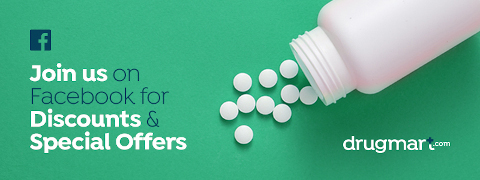Vitamin E (Vitamin E (Dl-Alpha Tocopheryl Acetate))
Vitamin E
400IU Capsule (Softgel)
Can not be split. Product of Canada. Shipped from Canada.
Vitamin E (Alpha-Tocopherol) Information
Vitamin E (Alpha-Tocopherol) (al' fa toe kof er ol) Aquasol E® alpha-tocopherol
Vitamin E is used as a dietary supplement when the amount of vitamin E taken in the diet is not enough. People most at risk for vitamin E deficiency are those with a limited variety of food in their diet and people with Crohn's disease (a condition in which the body attacks the lining of the digestive tract, causing pain, diarrhea, weight loss, and fever), cystic fibrosis (an inborn disease that causes problems with breathing, digestion, and reproduction), or who have gastrointestinal (GI) malabsorption problems (problems absorbing food). Vitamin E is also used to treat vitamin E deficiency in those at risk due to certain diseases and conditions. Vitamin E is in a class of medications called antioxidants. It is needed by the body to support the immune system and for blood clotting. It works as an antioxidant to protect your cells against free radicals.
Vitamin E comes as a capsule, gel capsule, and liquid drops to take by mouth. It is usually taken once a day or as directed by your doctor. Vitamin E is available without a prescription, but your doctor may prescribe it to treat certain conditions. Follow the directions on the package or on your product label or doctor's instructions carefully, and ask your doctor or pharmacist to explain any part you do not understand. Take vitamin E exactly as directed. Do not take more or less of it or take it more often than recommended by your doctor. Vitamin E supplements are available alone and in combination with other vitamins.
Before taking vitamin E,
tell your doctor and pharmacist if you are allergic to vitamin E, any other medications, or any of the ingredients in vitamin E products. Ask your pharmacist for a list of the ingredients.
tell your doctor and pharmacist what other prescription and nonprescription medications, vitamins, nutritional supplements, and herbal products you are taking or plan to take. Be sure to mention any of the following: anticoagulants ('blood thinners') such as warfarin (Coumadin, Jantoven); certain chemotherapy medications; multivitamins; orlistat (Alli, Xenical); niacin taken in combination with simvastatin (Flolipid, Zocor); or other vitamin E supplements and fortified foods. Your doctor may need to change the doses of your medications or monitor you carefully for side effects.
tell your doctor if you have or have ever had medical conditions.
tell your doctor if you are pregnant, plan to become pregnant, or are breast-feeding. If you become pregnant while taking vitamin E, call your doctor.
Unless your doctor tells you otherwise, continue your normal diet.
Take the missed dose as soon as you remember it. However, if it is almost time for the next dose, skip the missed dose and continue your regular dosing schedule. Do not take a double dose to make up for a missed one.
Vitamin E may cause side effects. Some side effects can be serious. If you experience any of these symptoms, call your doctor immediately: unusual bleeding or bruising Vitamin E may cause other side effects. Call your doctor if you have any unusual problems while taking this vitamin. If you experience a serious side effect, you or your doctor may send a report to the Food and Drug Administration's (FDA) MedWatch Adverse Event Reporting program online (http://www.fda.gov/Safety/MedWatch) or by phone (1-800-332-1088).
Keep this medication in the container it came in, tightly closed, and out of reach of children. Store it at room temperature and away from excess heat and moisture (not in the bathroom). It is important to keep all medication out of sight and reach of children as many containers (such as weekly pill minders and those for eye drops, creams, patches, and inhalers) are not child-resistant and young children can open them easily. To protect young children from poisoning, always lock safety caps and immediately place the medication in a safe location – one that is up and away and out of their sight and reach. http://www.upandaway.org Unneeded medications should be disposed of in special ways to ensure that pets, children, and other people cannot consume them. However, you should not flush this medication down the toilet. Instead, the best way to dispose of your medication is through a medicine take-back program. Talk to your pharmacist or contact your local garbage/recycling department to learn about take-back programs in your community. See the FDA's Safe Disposal of Medicines website (http://goo.gl/c4Rm4p) for more information if you do not have access to a take-back program.
Keep all appointments with your doctor. Ask your pharmacist any questions you have about vitamin E. It is important for you to keep a written list of all of the prescription and nonprescription (over-the-counter) medicines you are taking, as well as any products such as vitamins, minerals, or other dietary supplements. You should bring this list with you each time you visit a doctor or if you are admitted to a hospital. It is also important information to carry with you in case of emergencies.
The content on this page is for informational and educational purposes only and does not constitute professional medical advice. Patients should not use the information presented on this page for diagnosing a health-related issue or disease. Before taking any medication or supplements, patients should always consult a physician or qualified healthcare professional for medical advice or information about whether a drug is safe, appropriate or effective.


